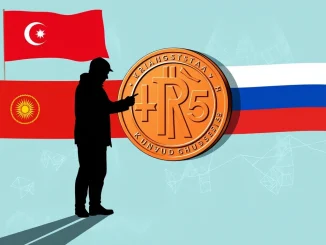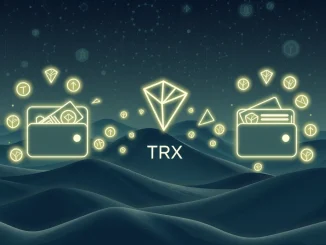
Russia is making a significant move in the digital asset space. State-owned defense giant Rostec has announced ambitious plans to launch a national stablecoin, the RUBx stablecoin, alongside a new payment platform called Rostec RT-Pay. This development signals a push towards integrating digital currencies into the country’s financial infrastructure.
What is the RUBx Stablecoin?
The RUBx stablecoin is designed to be pegged 1:1 to the Russian ruble. This means its value should remain stable, mirroring the value of the traditional ruble. According to reports, this stablecoin is planned to be issued on the Tron (TRX) network, which is an interesting choice given its focus on decentralized applications and high transaction throughput.
Key characteristics of the RUBx stablecoin include:
- **Pegging:** 1:1 to the Russian ruble (RUB).
- **Issuance Network:** Tron (TRX).
- **Issuer:** Rostec, a major state corporation.
- **Purpose:** Facilitate digital payments and smart contracts within the Russian economy.
How Will Rostec RT-Pay Work?
The Rostec RT-Pay platform is envisioned as the operational layer for the RUBx stablecoin and other digital payment methods. It aims to integrate deeply with Russia’s existing banking system, providing a bridge between traditional finance and the emerging digital asset world.
The platform’s features are expected to include:
- Integration with traditional Russian banks.
- Support for external digital wallets.
- Functionality for executing smart contracts.
- Compliance with Russian laws and anti-money laundering (AML) regulations.
The focus is on enabling seamless Russian digital payments across various economic sectors, with a strong emphasis on security and fostering innovation within the national financial system.
Why Use Tron TRX for the Stablecoin?
The decision to issue the RUBx stablecoin on the Tron TRX network is noteworthy. Tron is known for its speed and low transaction costs, which could be advantageous for a widely used payment stablecoin. While the official reasons weren’t detailed, potential factors could include technical capabilities, developer community presence, or strategic considerations related to blockchain infrastructure.
The choice of Tron TRX for a state-backed project highlights the increasing recognition of public blockchain networks, even for national initiatives. It differs from a purely central bank digital currency (CBDC) model, like Russia’s digital ruble project, suggesting a potentially different use case or complementary role for RUBx and RT-Pay.
What Does This Mean for the Russia Stablecoin Landscape?
The planned launch of RUBx and RT-Pay adds a new dimension to the Russia stablecoin ecosystem. While the Bank of Russia is developing its own digital ruble, Rostec’s initiative appears to be a separate, potentially enterprise-focused or industry-specific project. It could cater to specific sectors where Rostec has a presence or where secure, traceable digital payments are particularly needed.
This development could:
- Spur innovation in Russian digital payments.
- Provide businesses with a new tool for efficient transactions.
- Offer a regulated pathway for using digital assets within Russia.
However, challenges remain, including widespread adoption, technical integration complexities, and navigating the evolving regulatory environment for digital assets in Russia.
Looking Ahead to 2025
The target launch year of 2025 positions RUBx and RT-Pay to potentially coincide with or follow other major digital finance initiatives in Russia. The success of the RUBx stablecoin and Rostec RT-Pay will likely depend on their ability to offer tangible benefits over existing payment methods, ensure robust security, and gain trust among users and businesses.
This move by Rostec is a clear indicator that major Russian entities are actively exploring and implementing blockchain and digital currency solutions, extending beyond the central bank’s digital ruble project into areas potentially utilizing public networks like Tron TRX.
Conclusion
Rostec’s plan to launch the RUBx stablecoin on Tron TRX and the Rostec RT-Pay platform in 2025 is a significant development for the Russia stablecoin and digital payment scene. It represents a state-backed entity leveraging blockchain technology for secure and compliant transactions. As 2025 approaches, the crypto world will be watching closely to see how this initiative unfolds and impacts the future of Russian digital payments.



